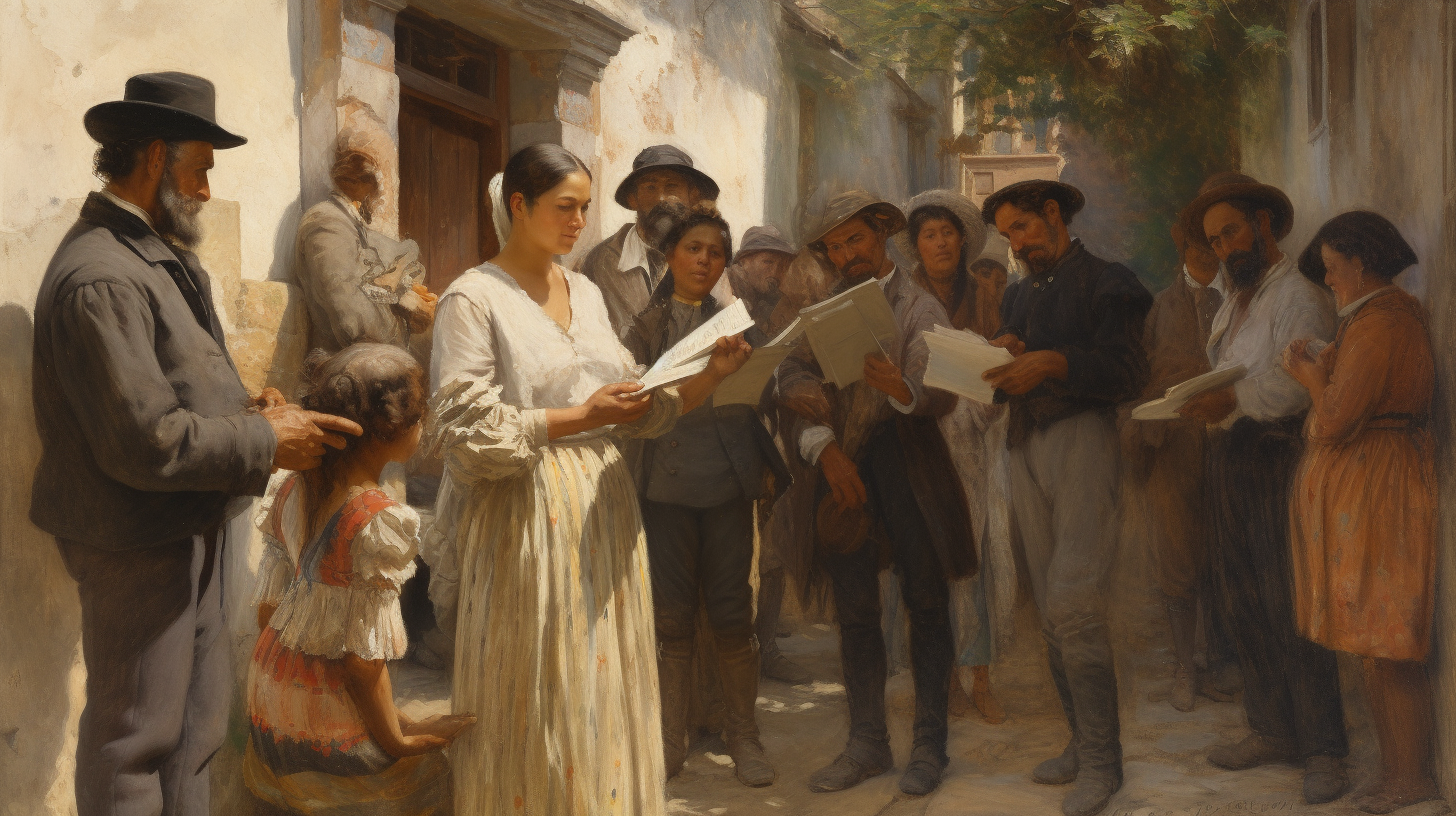
Articles

Mexican States
Southwest United States
Heritage and Governance
The Tlaxcalan Migrations to Northern Mexico
The year 2020 marked the 499th anniversary of the first Tlaxcalan migration of the 16th century to other parts of Mexico. Starting on June 6, 1591, selected families from Tlaxcala left their native soil to populate various locations in central and northern Mexico.
The Tlaxcalans had first assisted the Spaniards in destroying the mighty Aztec Empire in an extended campaign (1519-1521). As a reward, the Spaniards awarded the Tlaxcalans special rights and privileges. In fact, the Spanish-Tlaxcalan alliance soon evolved into a “stable, institutionalized pact” in which “Tlaxcala became a state within the empire.”
New Mexico Genealogy
New Mexico Expeditions (1539-1583)
From 1539 to 1583, four separate expeditions passed through New Mexico. The most famous expedition was the Coronado Expedition of 1540-1542, in which 300 soldiers and 800 Indian allies from New Spain (Mexico) passed through the Rio Grande Valley while looking for the fabled Seven Cities of Gold.
The Baptisms of Famous Mexicans
Famous men and women of Mexico have gained the attention of both the nation and the world. But all of Mexico’s famous historical characters started out the same: as the infant children of two parents. The following are extracts from the baptism records of several famous Mexican individuals. The following baptisms have been reproduced and translated, but some Spanish words have been misspelled in the documents. The English translations are approximate translations, not literal translations, and include the spelling out of some abbreviated terms. Several words that were not clearly understood were left out.
European Immigration to Mexico
According to Professor Jürgen Buchenau, Mexico has proven to be a "salad bowl," instead of a "melting pot“ mainly because "most immigrant families sought to retain their native languages and customs.“ Many of the European immigrant groups in Mexico – with the possible exception of the Spaniards – formed “enclaves” in which they could maintain their own cultural integrity.
The 1921 Mexican Census: A Study of Racial Classifications and Languages
Mexico’s 1921 General Census of Inhabitants was the fourth of its kind to be carried out in the country. The census presented information as of November 30 of that year. Mexico’s 1921 census asked its 14.3 million inhabitants to categorize themselves by three primary categories: Pure Indigenous, Indigenous Mixed with White, and White.
Indigenous Mexico and the Spanish Language
Today, more than 7 million of Mexico’s 126 million people speak 364 Indian linguistic variants (dialects), but almost 90% of those people are bilingual, speaking both Spanish and an Indigenous language. Those who do not speak Spanish are called monolingual.
The 1895 Mexican Census: Mexico’s Languages
The census of 1895 was the first national census of Mexico. Its tabulations provide us with the first window into the condition of the indigenous languages spoken in the Mexican Republic before the dawn of the Twentieth Century. The census also provides some perspective on the presence of extranjeros (foreigners) and their languages two decades into the Porfiriato of Porfirio Díaz (1876-1911).
Mexico’s Great Diversity in the 2020 Census
When Spanish soldiers arrived in Mexico in 1519, native people ranged through every part of the country that was eventually made into a colony of Spain. It is estimated that at least 200 languages were spoken through this entire area at the time.
The Germans and French in Mexico
According to Professor Jürgen Buchenau, Mexico has proven to be a "salad bowl," instead of a "melting pot“ mainly because "most immigrant families sought to retain their native languages and customs.“ Two of the largest immigrant groups in Mexico were the Germans and the French and many of them formed “enclaves” in which they could maintain their own cultural integrity.
The Indians of Southern California’s Interior
“The Indians of Southern California’s Interior” will explore the Native American people that inhabited Southern California’s mountains and deserts. While the Spanish mission system dominated the coastal area, the interior of California was settled more slowly and the conquest of these inland Indians took more time. Today, nearly three dozen Indian reservations lie within this area. The region from San Diego to San Bernardino counties will be discussed.
Indigenous Sonora and the Census
When the Spaniards first reached Sinaloa and Sonora in 1531, they found indigenous people living along the coastal region. Speaking eighteen closely related dialects, the Cáhita peoples of Sinaloa and Sonora numbered about 115,000 and were the most numerous of any single language group in northern Mexico. The Spaniards called them "ranchería people.“
The Coahuiltecans Over Time: Past and Present
For hundreds of years, the lowlands of northeastern Mexico and southern Texas were occupied by hundreds of small, autonomous Indian groups that lived by hunting and gathering. We call these Indians Coahuiltecans to denote the broader geographic range they shared. They spoke many languages, some of which were not believed to be related. As such, Coahuiltecan is not an ethnic classification.
Moctezuma’s Descendants in Aguascalientes
For many years, Aguascalientes and Nueva Galicia researchers have agreed that one branch of Moctezuma’s descendants ended up in Aguascalientes. However, the paper evidence for this theory has been difficult to assemble. And, at this point in time, there are still some gaps. It is believed that the researchers Guillermo Tovar de Teresa and Mariano Gonzalez-Leal have put together more detailed analysis on this lineage, but at this time, we will present what we have, which present parts of the picture.
Indigenous Mexico in the 2020 Census: A State-by-State Analysis
Mexico’s 2020 Population and Housing Census was conducted in March 2020. More than 147,000 interviewers traveled the nearly two million square kilometers of the national territory, visiting all Mexican households to obtain information about the demographic, socioeconomic and cultural characteristics of the people of each state.
Santa Barbara and Ventura During the Spanish Period (1783-1821)
More missions were established among the Chumash than among any other Native American group in California. Five missions were founded in Chumash territory: San Luis Obispo (1772), San Buenaventura (1782), Santa Bárbara (1786), La Purísima Concepción (1787) and Santa Ynez (1804). The Indians of this area were described by the Spaniards as gentle, hospitable to strangers, lively, industrious, skillful and clever.
The Enemies of the Aztecs
“The Enemies of the Aztecs” will discuss the various groups who fought the Aztecs and were not conquered by them. In 1519, the Aztec Empire ruled over fifteen million people living in 489 communities in 38 provinces. Professor Michael E. Smith has stated that “one of the more intriguing characteristics of the Aztec Empire is the existence of major unconquered enemy states surrounded by imperial territory... Ethnohistoric sources from Tenochtitlán [the Aztec capital city] suggest that the Aztecs did not really want or need to conquer these states, and that they could easily have done so had they wished.” But Smith adds, “the boasts of the Mexica are better seen as propaganda than as accurate descriptions of political reality.” In fact, Smith’s research concluded that “the nature of the enemy states and their dealings with the empire shows that they were serious and powerful adversaries.”
Indigenous Coahuila: Past and Present
Coahuila de Zaragoza – the third largest state of Mexico – was inhabited by six nomadic indigenous groups when the Spaniards arrived in the late Sixteenth Century: The Tobosos, Irritilas, Coahuiltecans, Rayados, Chisos and Guachichiles. The Coahuiltecans occupied a considerable part of what is now eastern Coahuila, but also occupied a large portion of northeastern Mexico and southern Texas. They were made up of hundreds of small autonomous bands of hunter-gatherers.
The Diversity of the Chumash People
This presentation explores the Chumash tribes that inhabited the coastal region of the Santa Barbara area when the Spaniards arrived there in 1769. Speaking eight distinct languages – most of which were mutually unintelligible – the Chumash lived and thrived in an area where five Catholic missions were founded between 1772 and 1804. Their history, customs and present status with regards to federal recognition will be explored.
The Native People of Nueva Vizcaya and Nueva Galicia
The following tables contain information of the native people of the Spanish jurisdictions in Nueva Galicia, Nueva Vizcaya, Sonora and Sinaloa. These extracts primarily contain information about the indigenous groups occupying these areas at the time of the Spanish contact, the year of which varies from one place to another. However, Peter Gerhard’s book contains a wealth of local information, and it is highly recommended that interested researchers purchase the book to have access to all the information provided.
Extranjeros: Mexico and Its Immigrant Populations
According to Professor Jürgen Buchenau, Mexico has proven to be a "salad bowl," instead of a "melting pot." Why?: Largely due to the fact that "most immigrant families sought to retain their native languages and customs." Although the British, French, Americans, Germans and Chinese have been the largest foreign ethnic groups in Mexico in the Twentieth Century, they tended to form enclaves, or “colonies,” in which they could maintain their own cultural integrity. For most of these groups, only after two or three generations did their descendants blend into the Mexico’s Spanish-speaking population.

Article Categories
- Aguascalientes 14
- Arizona 4
- Baja California 5
- Baja California Sur 3
- California 14
- Campeche 6
- Census 34
- Chiapas 4
- Chihuahua 14
- Coahuila 9
- Colima 1
- Conquistador Chronicles 2
- Durango 3
- Ethnic Identity 36
- Genealogy 32
- Guanajuato 9
- Guerrero 9
- Hidalgo 3
- Indigenous Insights 92
- Jalisco 25
- Mexico City 11
- Michoacan 7
- Morelos 5
- Nayarit 4
- New Mexico 3
- Nuevo Leon 8
- Oaxaca 6
- Politics 10
- Puebla 6
- Queretaro 2
- Quintana Roo 5
- San Luis Potosi 11
- Sinaloa 6
- Sonora 17
- Southwest US 23
- State of Mexico 6
- Tabasco 4
- Tamaulipas 12
- Texas 6
- Tlaxcala 7
- Veracruz 8
- Yucatan 6
- Zacatecas 13




















